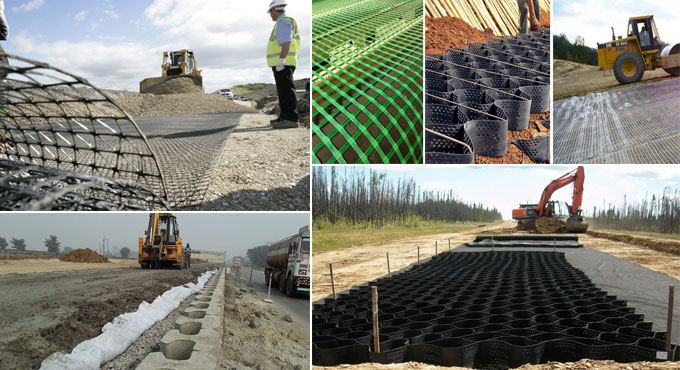
What are Geosynthetics and How to Use Them in Construction
The new century is seeing a lot of improvements in ground engineering; and geosynthetics are one of the prominent of those. Geosynthetics are polymeric products to solve ground-based civil engineering problems. Today, we will look into what are geosynthetics and how to use them in construction.
What are Geosynthetics?
Geosynthetics are basically polymer products, artificially made in factories, that are used to support and stabilize the terrain where some ground construction is necessary. Previously, we used bricks, stone chips, packed soil etc. to do this, but geosynthetics are totally revolutionizing the field.
It is a sad and scary truth, but we are running out of raw materials on this planet. Cement and steel and clay are available less and less every year, and their costs are growing higher. Geosynthetics can be excellent in this field, replacing conventional raw materials.
Not only materials, but design-wise geosynthetics are changing the landscape as well. They require special kind of design instead of conventional infrastructure designs. While at first that can be a little daunting, but in the end, they produce much better results than conventional design work.
Usage and Types of Geosynthetics
Geosynthetics are not one type of product but of many types, and can be used in many kinds of scenarios. The most usage of geosynthetics till now is as basal reinforcements under heavy-load roadways on soft ground or as embankment support.
But they can be used for other purposes as well. For example, geosynthetics can be used as filters and drains behind retaining walls, as subgrade separators for roads, to retaining water in water bodies like ponds or canals, as barrier material for contaminated landfill or garbage dumps, and so on and so forth.
Depending upon the application and the properties, geosynthetics can be of the following eight types:
1. Geotextiles
2. Geogrids
3. Geonets
4. Geomembranes
5. Pre-fabricated vertical drains
6. Geosynthetic clay liner
7. Geocells
8. Geocomposites
Each type of geosynthetic has different and precise properties that you can utilize to suit the scenario perfectly. For example, geotextiles are very strong cloth or net made from synthetic, non-bio-degradable material that you can make great use of for separation, reinforcement, filtration, and/or drainage purposes.
Again, geocells are like mattress foam, or honeycomb-like structures, filled with packed soil to correct the slope of ground or to reinforce it for very cumbersome usage like heavy railroad base.
The following table will give you a simplified idea about what type of geosynthetic can be used for what purposes.
| Table of functions for the types of Geosynthetics | |||||
| Geosynthetic Type | Separation | Reinforcement | Filtration | Drainage | Containment |
| Geotextile | YES | YES | YES | YES | no |
| Geogrid | no | YES | no | no | no |
| Geonet or Geospacer | no | no | no | YES | no |
| Geomembrane | no | no | no | no | YES |
| Geosynthetic clay liner | no | no | no | no | YES |
| Geofoam | YES | no | no | no | no |
| Geocells | YES | YES | no | no | no |
| Geocomposite | YES | YES | YES | YES | YES |
Testing of Geosynthetics
Since they are a relatively new technology and few standardized protocols exist for them, testing out various geosynthetic products before you use it in your construction scenario is highly recommended.
The sampling, testing, and reporting of test results on geosynthetics can be done accordingly as per the ASTM, AS, or BS regulations. The tests that are commonly performed on geosynthetics are as follows:
1. Testing of tensile properties ? to find out how strong it is.
2. Interaction with the fill material (packed soil, mostly) testing ? to see the soil interface shear and pull out behavior characteristics.
3. Hydraulic (liquid flow related) properties ? in case you need to use it for filtration or drainage, or the opposite kind, prevention of seepage.
4. General integrity examination like durability and endurance tests ? for testing out how solid and dependable the material is against various types of expected damages and degradation.
The usage of geosynthetics range through a wide variety of environments. They are exposed to a lot of variables like stress, water, soil, and other environmental effects.
It is, of course, not possible to test out your choice of geosynthetics under all of those conditions. However, some tests are designed to test the quality of the product in such ways to reveal its resistance to most of those factors. It?s a fairly new thing in the market ? give it time!


